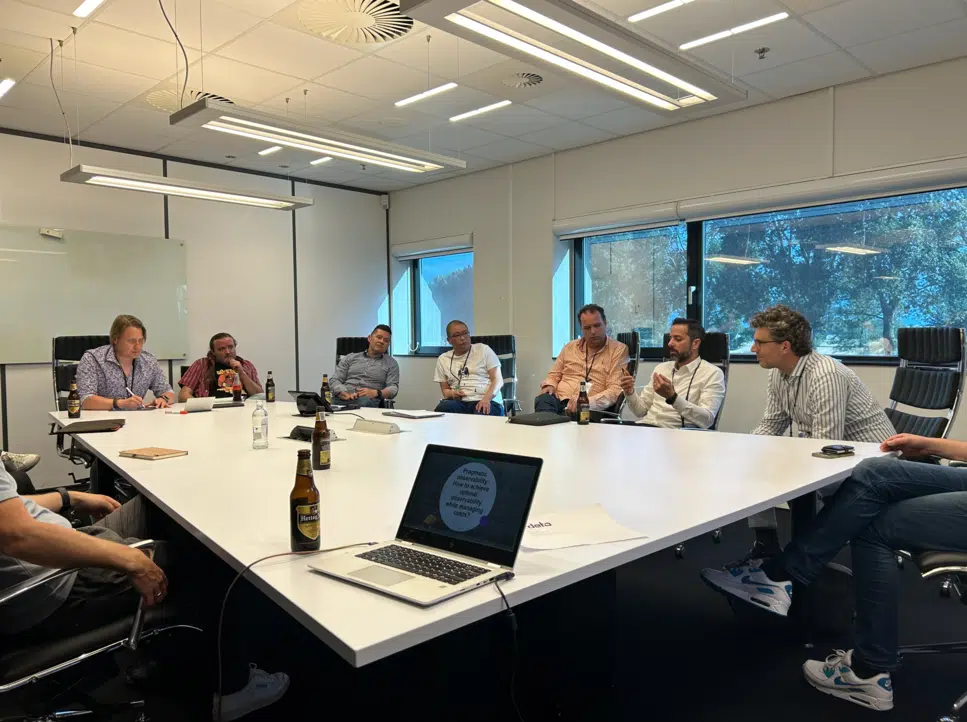Dave Knifton currently works as a lead global data architect for a major blue-chip multinational. He has a passion for data architecture and has gained extensive experience of it from a wide range of business sectors across the globe in over 30 years.
As a long-term associate of Third Republic, Dave has written the feature below around the importance of data in the future of businesses, based on his new book Datagility.
In these unprecedented times it might be worth assessing whether you would like to move your career to a more data centric future. If this is of interest then investing the time that you may have a result of isolation to learning new skills and approaches will be a wise move.
In the future, the only organisations that will survive are those that can rapidly adapt to overcome challenges more frequent and profound than ever before.
The current phenomenon of disruption threatens the survival of every organisation operating in every sector around the globe. Seemingly indomitable market leaders can fail overnight.
Organisations can no longer simply hope to survive and thrive by responding to each new challenge ever faster. They must make fundamental changes so that they become able to adapt to the future with sure-footed agility.
This advice sounds sensible, compelling even – but how on earth can we make real changes to our organisations to deliver it?
As we are all aware, data underpins every facet of the modern world.
For so many of the world’s organisations, not only does data enable their operations, but increasingly their products and services are entirely fabricated from data. And, if it is true that data flows provide the vital lifeblood of organisations, then a significant part of any transformation must be to cleanse and revitalise these flows. If this can be achieved, the prize will be to deliver substantial benefits from data that will drive forward sustainable success.
But to attain this state, will require a fundamental redefinition of an organisation’s relationship with its data.
We need to refocus our organisations to adopt data-centric approaches that awaken their true innovative potential and rouse them from their slumbering data inertia.
However, we cannot transform our organisations by exclusively concentrating on data. The systematisation of our data is here to stay and is the only non-negotiable certainty of our future. This dictates that we integrate our data transformation with a transformation of our system delivery approaches. Recently, IT has swarmed to Agile and DevOps to become more responsive to a never-ending stream of requirements, and thus our transformation must also mesh with this trend.
Although the vast majority of our organisations have adopted Agile, exactly what this means varies widely. It is not truly a single approach, more a range of broadly similar approaches with common underlying themes which are succinctly recorded in The Agile Manifesto[1].
The vision of the Agilistas is to bring IT and business together marching in lockstep towards a golden dawn of rapid business focussed delivery. This can only be a good thing. However, this book is not concerned with the marginal improvements that streamlining delivery can produce; instead it proposes a radical data-centric transformation of an organisation. It is concerned with rethinking and rebuilding an organisation’s partnership with its data. It describes a vision where data delivery and not technological delivery is centre stage.
But to achieve this, requires us to strip away the noise, myths and misunderstanding that increasingly obscure our basic understanding of data. Over time, many basic data truths have been collectively forgotten; simply buried by the continuous sedimentation of technological changes and paradigm shifts.
The goal is to move data out from the shadows cast over it by technology and legacy thinking, to become the driving force of change and innovation.
Unleashing the true power of an organisation’s data relies on establishing a foundation of very simple building blocks. These enabling blocks are described in this book. Step by step we will learn how they can be used to drive the transformation of our organisations to become truly data agile.
{{cta(’06c5a26f-4ddb-4988-beb1-2b37897fde02′,’justifycenter’)}}
Transformation can suggest revolution. But we would be wise not to throw everything away. Even if it would be possible, starting from scratch would be a catastrophic mistake. Instead, we must largely re-engineer what we already have, repurposing it to become the framework that will enable our future. We will almost certainly need to augment what is already established, and this book describes how to achieve this.
Successful transformation will engineer change, but of course we are already in an era of constant change. Simply showering down yet more may help, but the effects on our organisations may be short-lived and even counterproductive. Indifference, or even resistance, can be symptomatic of innovation overload and fatigue.
Some people will also question why this transformation is even required at all – in times of plenty, there seems no looming threat necessitating upheaval. And, they will argue that our organisations are already able to identify problems and take actions to remedy them. However, this ignores the truth that typically an organisation’s approach to problem solving is episodic and ad-hoc. Whilst it solves one set of immediate problems, it can also create new problems in its wake.
All too often with hindsight, we realise that a specific solution healed a symptom of the problem, rather than the problem itself. Unfortunately though, the adopted solution has now added yet more complexity and thus inertia to the still unresolved problem – adding sticking plasters on top of sticking plasters.
So, what will be our approach to a successful data transformation?
To answer this question, I’d like to use an anecdote of when my friend Ray offered to coach me at tennis. This experience taught me many things, foremost of which was the realisation that I will never be a great tennis player! Although Ray’s coaching improved my modest tennis skills, it also taught me some fundamental lessons about transformation that I will share in this book.
Ray and I met at the tennis courts for his initial review of my technique. We had a ‘knock about’ for a while, so that Ray could assess the challenges that lay ahead. After watching me puff and pant around the court for a few minutes, theatrically lunging in frustrated attempts to connect with the ball, he looked me in the eye and said,
“Dave, I think we had better start with the very basics!”
Although in that moment I was quite disappointed, this was tremendous advice. There was no point in trying to graft spins onto my inept returns, because the underlying foundations were so flawed that the results would have been at best ‘unpredictable’. What was required was to strip back my game to the very basics of position, timing and technique and build changes onto that solid foundation.
Over the following months of adopting his approach, my play substantially improved. Each new skill could be rapidly adopted by being built on top of the previously acquired skills.
The court hadn’t changed, the racket and ball were as before, but something fundamental in me had started to change. Sure, I was a little fitter and stronger, but far more importantly, I was now in the correct position at the right time and able to confidently return the ball over the net. I was now far better equipped to respond to any of the variations that Ray delivered to me.
This transformation would never have taken place if Ray had just yelled at me to run faster and try harder. Yet strangely, this can be exactly the approach we adopt within our organisations.
We cannot deliver sustainable success simply by telling people to deliver more stuff ever faster.
To engineer successful long-lived changes to the behaviours of our organisations, we too will have to go back to the very basics, strip away the noise of the now and instead concentrate on creating pre-requisite basic building blocks.
Each of these will be used to construct a foundational framework with sure-footed increments. The framework will re-shape our thoughts, decisions and practises and therefore transform our data culture.
Thus, we will not only improve what we do today, but radically transform what we are able to deliver in the future. At the heart of our transformed organisation, will be an ability to constantly and sustainably adapt to change. As a result, our organisations will be able to dramatically liberate the untapped power of their data, irrespective of their unknown futures.
Remembering back to the tennis coaching, it was hard for me to shake off my delusion and bad habits and listen to Ray’s patient guidance. However, for all of us who care about data outcomes, the challenges will be so much harder.
There is, after all, a whole organisation we need to transform!
Datagility is a guidebook to provide assistance in this transformational quest by describing the route to an organisation’s future data agility.
It’s a guide for everyone, from C-suite to the codeface who has a stake in the data-driven success of their organisation. It describes a shared vision that will unite the strategic with the operational, and the business with technical delivery and provides practical steps that will ensure this vision becomes real.
See here https://agilemanifesto.org/
Are you looking for a career change or for talented tech professionals to join your team? Speak with our specialist consultants today.




